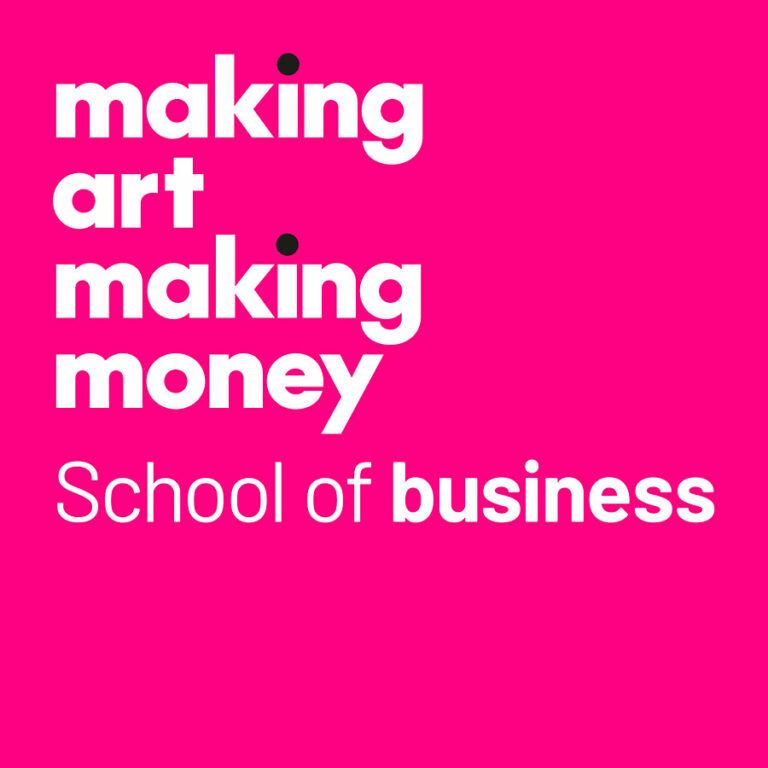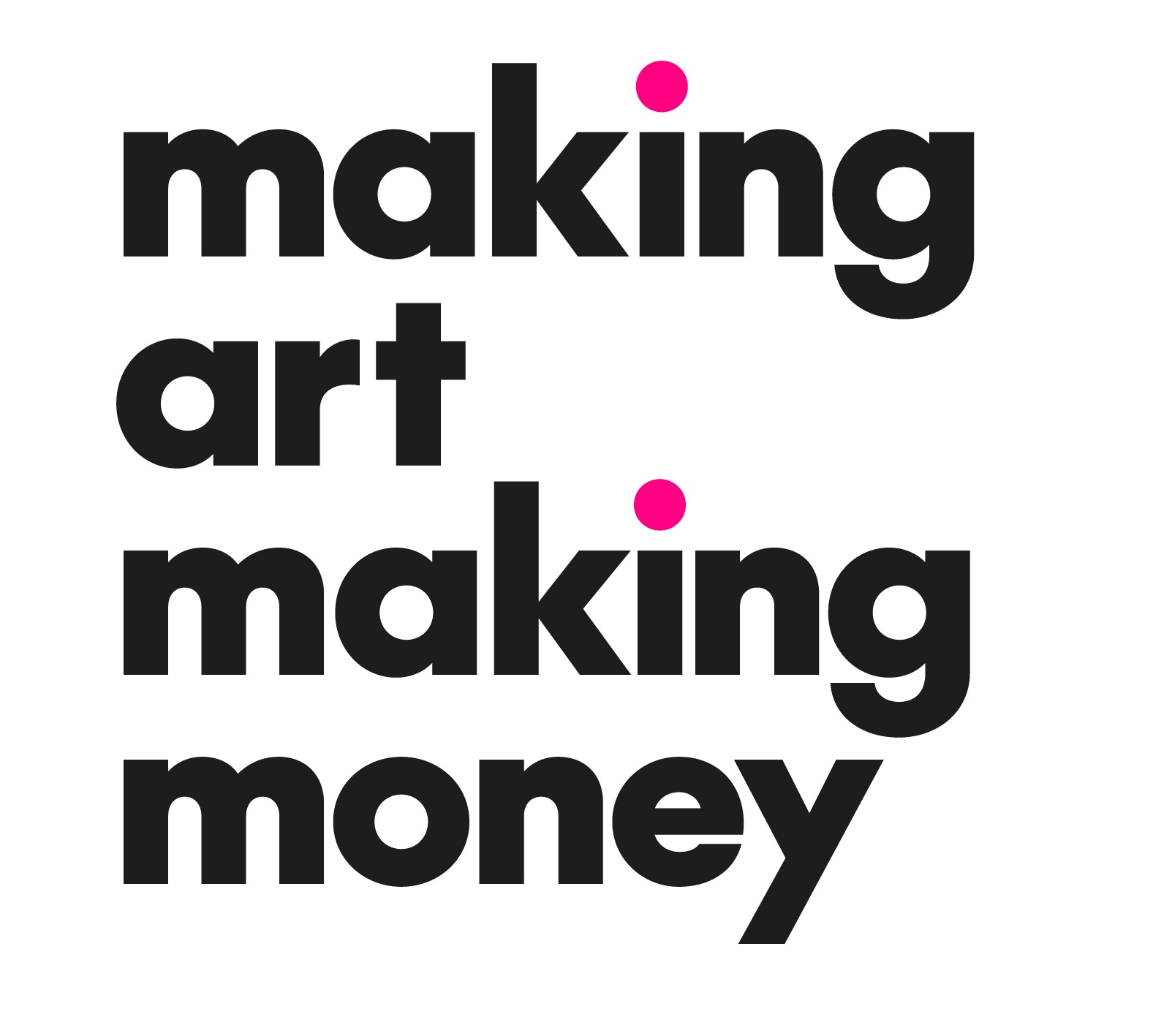How are we different?
2005
SERVING ARTISTS SINCE
23
countries served
21
types of artists
100%
No-risk GUARANTEE

Graduate by selling your homework
You do not need a cohesive body of work to sell in order to apply.
We only ask that you share an estimate of your art sales history.
If you have sold your art then it stands to reason that you could be selling more if you had:
- a proven roadmap
- an expert mentor
- an informed and like-minded community who wants to sell your win
Students enrolled in Making Art Making Money graduate by selling enough of their fine art to cover their tuition at a minimum, as featured by Inc. Magazine.
During the program, you will sell your art, or you won’t.
However, using our process you’ll gain critical insight into why you sold your art and why you didn’t. Your insights will shape profitable adjustments.
It’s rarely necessary, but we’ll work with you for free until you sell enough of your art to graduate. We only ask that you complete your lessons and assignments within six months, which is plenty of time.
If you don’t give up, we won’t give up.
Graduating fromthis program will help yo
- triple your confidence and focus as a fine artist
- confidently price your art for a fair profit
- gain direct support from fine artist Ann Rea, the leading direct sales fine art luxury marketing and sales expert
- build a support network of like-minded artists who want to see you win
- start selling more art, making more money, with more ease and dignity
Who does this program serve?
The Making Art Making Money School of Business is for fine artists who want to make a better living without:
- feeling pushy
- a complicated eCommerce site
- paying sales commissions
- writing a cringy artist statement
- trying to sell yourself
Learning Path
Maximize your investment.
Problem
Every program and student is different so we don’t assume that you’ll know the best practices to maximize your learning.
Impact
You’ll have the benefit of understanding best practices so you can earn a higher return on your tuition investment.
Course Objective
Along with the Orienting course we’ll welcome you with a private one-on-one orientation session to get you grounded and focused.
Start increasing your focus and confidence.
Problem
When people reject your art, it feels personal. Rejection feeds your inner critic, kills your confidence, and fogs your focus, leading to poor productivity.
Most fine artists feel overwhelmed by trying to balanced their time and energy making art and making money because they are not focused on the fastest path to cash.
Consequence
80% of your psychology and 20% of your strategy is shaping your success.
Course Objective
If you are the average graduate, you’ll experience a three-fold increase in your focus and confidence. You’ll learn four-minute daily processes developed and clinically tested by expert Performance Psychologist George Pratt, Ph.D.
Expect a positive shift in your perspective.
Problem
Artists are not selling goods or services; our product is emotion.
Your job as an artist is to help people connect with their humanity, but you must first connect with your own.
Consequence
When artists don’t understand their product or purpose, they awkwardly struggle to justify their contribution, the value of their art, and their role as artists.
Self-involved, cringe-worthy artists’ statements reflect this common confusion and insecurity.
Course Objective
You’ll learn your Why, your soul’s truth. You’ll know your purpose and mission within 28 days.
Attract collectors who are 82% more likely to buy.
Problem
Most fine artists struggle because they don’t know and serve their niche. Knowing your niche means that you know the following:
- who wants to buy your art
- why they want to buy your art
- where and how to find more people like them
Consequence
If you don’t know your niche, you’ll make ineffective attempts to gain validation and subject yourself to needless ongoing rejection. These attempts include paying to enter prestigious* art contests or juried shows.
Course Objective
Using Ann Rea’s 4-Part Code, you’ll learn how famous artists defined their niche and see how you can.
* Prestigious comes to us from the Latin word praestigiosis, meaning “full of tricks” or “deceitful.”
Create a concise, clear one-page plan.
Problem
A plan to sell art without a plan is a plan to sell no art. Most artists do not have a written plan to sell their art. If they do, it resembles an inadequate to-do list.
Consequence
Without a written plan to sell art, examining your thinking is unlikely. Every business must outline a plan to achieve success and measure it. What we measure improves.
Micro-businesses that maintain a written plan grow 30% faster than those that don’t.
When art sales goals are defined correctly, they are 42 % more likely to be achieved.
Course Objective
You’ll define your specific art sales goal and draft a simple, clear, and concise one-page plan to achieve it.
Start connecting with affluent collectors.
Problem
Fine art is a luxury, and the affluent buy art requires a solid understanding of luxury marketing and sales strategies versus conventional ones.
Consequence
Your marketing is the bigger frame around your art and you as an artist. Awkward marketing and sales attempts lead to:
- embarrassing missteps in selling your art
- needless rejection from unqualified prospects at best
- countless lost art sales at worst
Course Objective
You’ll learn to focus on one proven luxury marketing process to find collectors. These collectors are 82% more likely to buy, spend more money, and be loyal.
Guide conversations that inspire collectors.
Problem
A fine artist’s work is personal, so many artists operate under a false understanding that they need to “sell themselves.”
Consequence
Your attempt to sell your work will be ineffective if it makes you feel conflicted, pushy, or salesy.
Course Objective
You’ll learn how to listen and guide prospects through seven stages of authentic and inspiring conversations in a way that works well for introverts.
Protect your financial assets.
Problem
An artist’s copyright can be their most valuable financial asset. However, you can’t protect your property or collect damages if you do not enforce your copyright claim.
Consequence
If you do not protect your copyright, you’re granting the market “implied permission” for others to steal it with little to no recourse.
Course Objective
You’ll determine copyright protections available inside your legal jurisdiction. Then, you’ll take measures to communicate and defend your copyright.
Confidently price your art for a fair profit.
Problem
If you aren’t pricing your art for a fair profit, you have an expensive and disappointing hobby.
Even though a representative’s job is to represent you, they commonly discount your art. Artist representatives have no financial investment in your consigned inventory, so they have nothing to lose.
Consequence
Discounting or donating your art places you at a disadvantage in the marketplace. When you discount your art or give it away for free, you:
- immediately devalue your art
- prove that your prices have no integrity
- damage your reputation
- kill your confidence
Course Objective
You’ll price your art for a fair profit by calculating your:
art costs
expense
labor
* Warning: If you’re not generating a profit by selling your art, the IRS or your taxing authority could deem your art a hobby, and you will lose your income tax deductions, making it impossible to earn a living as an artist. Consult with your tax advisor.
Start determining your niche.
Problem
Conventional education requires you to memorize and regurgitate correct answers. In exchange, you receive a diploma or certificate, which is useless in business.
Consequence
Even if you have an academic mastery of a subject, this will not ensure that you can produce results in business.
Course Objective
During the final Prototype Project, you’ll learn why collectors purchased your art and why others didn’t so that you can focus on your niche.
You’ll test and refine your comprehension by selling your art to cover your tuition, at a minimum, as featured by Inc. Magazine as an innovative model of education.
